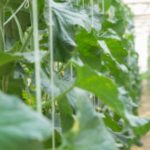The irrigation process mainly used to cultivate agricultural crops during the period of insufficient rainfall season. An automatic plan irrigation system operates a system without requiring manual intervention by people.
Once automatic irrigation system installed in agriculture the distribution of water to crops become easy and get an positive impact on irrigation. It does not require any human support to carry out operations continuously. The bottle irrigation system or using clay pots the automation irrigation can be done. It is very difficult to set up irrigation systems because they are very expensive and complex in their design.
In this blog, we are describing the irrigation systems that work automatically as we go from the first system to the next, and so on.
1.Automatic irrigation system on detection of soil moisture content:
The automatic plan irrigation system on the soil moisture detection is the development of an irrigation system that turns the submersible pumps on or off by using relays to perform this action on the moisture content detection of the ground. The main benefit of using this irrigation system is to reduce human interference and ensure adequate irrigation.
By using a transformer microcontroller acts as a major block and a power supply is used to supply 5V power to the whole circuit, a bridge rectifier circuit and a voltage regulator. The 8051 microcontrollers are programmed such that it receives the input signal from the sensing material which consists of a comparator to know the varying moisture conditions in the soil. The OP-AMP which serves as a comparator acts as an interface between the sensing material and the microcontroller to transfer the soil moisture conditions (i.e. moisture, drought, etc).
Once the microcontroller gets the data from the sensing hardware – it compares the data as programmed in a way that generates output signals and activates the relays to operate the submersible pump. The detection arrangement is made with the help of two rigid metal rods which are inserted into the agricultural field at a certain distance. The necessary connections from these metal rods are interfaced with the control unit to control the operation of the pump depending on the moisture content of the soil. Its automatic irrigation system can be further improved by using advanced technology that consumes solar energy from solar panels.
2.Solar powered auto irrigation system:
In agriculture, proper use of automatic irrigation methods is very vital due to some real-world shortcomings like scarcity of earth reservoir water and scarcity of rainfall. The water level is reduced due to the continuous extraction of water from the soil and thus gradually leads to water scarcity in agricultural areas, slowly turning them into barren land.
In the above irrigation system, solar energy generated by solar panels is used to operate the irrigation pump. Two rigid copper wires are inserted into the ground to find out if the ground is wet or dry. A charge controller circuit is used to charge the photovoltaic cells to supply solar energy to the entire circuit. Whenever the soil condition is “dry” the microcontroller sends commands to the relay driver and the motor cranks up and supplies the field with water. And, if the ground is wet, the engine will shut off. The signals that are sent from the sensors to the microcontroller through the output of the comparator operate under the control of a software program that is stored in the ROM of the microcontroller. The LCD screen displays the state of the pump (on or off) interfaced with the microcontroller.
This automatic irrigation system can be further enhanced by using GSM technology to take control of the motor switching operation.
Conclusion:
These are the three irrigation systems that use different technologies, useful for people working hard in agricultural fields. Farming is becoming more user-friendly, with farmers spending less time in the field and more time in front of computers analyzing data and diagnosing problems. Until now, fully automatic plan irrigation farms are still a coveted dream, but the rapid development and sophistication of agricultural machinery pave the way for the advent of automatic farming as a dominant trend in the modern economy.


